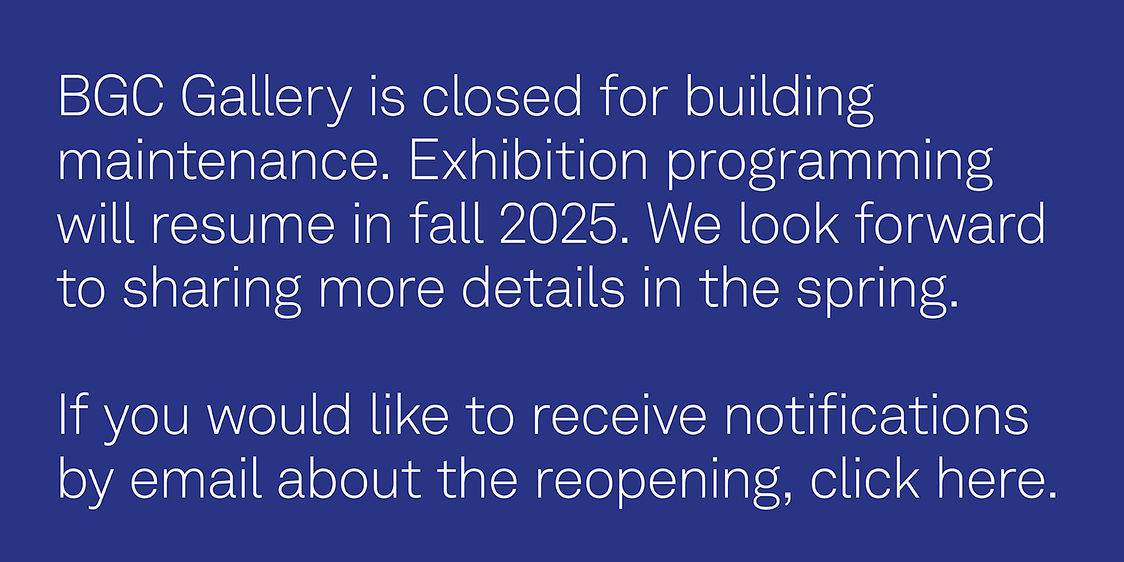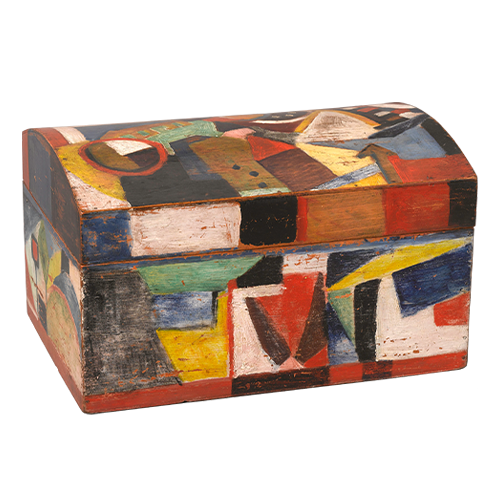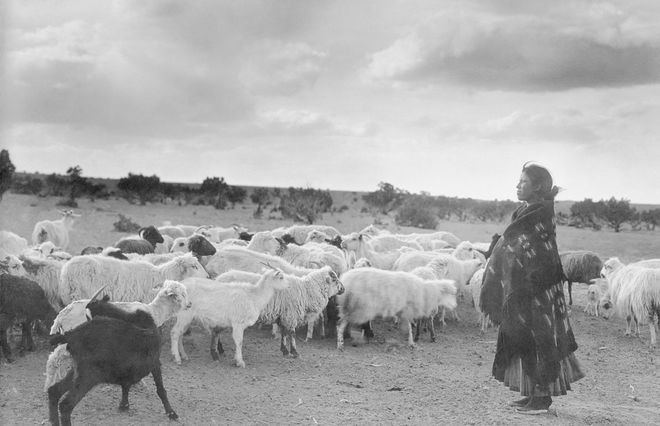Shaped by the Loom: Weaving Worlds in the American Southwest will be the first virtual exhibition to showcase the American Museum of Natural History’s (AMNH) collection of Indigenous textiles from the greater American Southwest.
To know Navajo weaving, one must also understand the network of relationships that sustains a larger world, or ecosystem, of craft production in the American Southwest. This world includes the sheep, the seasonal cycles that guide the harvesting of dye plants, the individual and communal rhythms of making, the cosmologies that inform a weaver’s work, and the songs, stories, and prayers that are woven into every rug. With this in mind, Shaped by the Loom places Indigenous aesthetics and ways of knowing at the center of Navajo textile production, highlighting the localized and land-based knowledge systems that guide the process behind the finished product. Rather than reifying the object, this perspective foregrounds the active and generative practices that shape and animate this art form. Just as the Navajo language is powerfully verb-oriented, weaving metaphors are equally action-oriented, reflecting the connection between mind, body, and material inherent to the making process.
By exploring the various modes and contexts of intercultural influence, adaptation, and exchange in the region, we also examine the trans-historical conditions for change in this particular medium, and how it is intertwined with materials, objects, and social practices that articulate both cultural and regional identities. With a focus on Navajo textiles, comparisons are made with Pueblo and Hispanic weaving traditions to show regional variation in—and transmission of—motifs, materials, techniques, and technologies.
Shaped by the Loom brings into dialogue multiple aspects of process, including the tangible and the intangible, the visual and the tacit. It strives to de-formalize Navajo weaving in order to shift analysis away from the development of periods, designs, and styles toward an alternative framework—one that emphasizes Native agency and experience in the history of textile production. As a result, we re-center weaving as a cultural practice, a mode of engagement with the natural world, and a system of Indigenous knowledge production and transmission, in addition to acknowledging its predominantly non-Native economic and institutional history. Striving to bring specificity to the documentation and interpretation of AMNH’s historic collection, this innovative digital project elevates the voices of contemporary Native artists and makers to express the cultural legacy and continued vibrancy of weaving traditions in the American Southwest. It takes many voices to tell this story, bringing different cultures of knowledge production into conversation and highlighting the diversity of perspectives embedded within these narratives. Through concepts of relationality, land-based literacies, and embodied ways of knowing, as well as interactive storytelling, dye and fiber analysis, and a variety of media, Shaped by the Loom will advance and enrich discourses relating to Native American textile art, craft history and theory, and issues of cultural preservation and heritage.
A digital Focus Project curated by Hadley Jensen, BGC/AMNH Postdoctoral Fellow in Museum Anthropology, in consultation with Lynda Teller Pete and Barbara Teller Ornelas. Focus Projects are part of an innovative program organized and led by faculty members or postdoctoral fellows through seminars and workshops that culminate in small-scale, academically rigorous exhibitions.
Support for Shaped by the Loom: Weaving Worlds in the American Southwest has been provided by Bard Graduate Center and the Wyeth Foundation for American Art.












.jpg,732x732,c)



